Today, we are looking at the Lexar PLAY 1TB NVMe SSD. This little drive differentiates itself from much of the crowd by being M.2 2230 sized rather than M.2 2280. If you do not know, the 30 and 80 in the sizes refer to the length of the drive in mm, so a 2230 drive is less than half the length of a 2280 drive. As a result, this drive is tiny. Lexar markets this drive as PLAY, and the primary market for this drive would be devices like the Steam Deck and ROG Ally. Personally, I will probably slap this drive in a USB enclosure, but perhaps I am getting ahead of myself. First, we should look at the drive.
If you just want to get the drive, here is an Amazon affiliate link to the listing.
Lexar PLAY 1TB PCIe Gen4 NVMe SSD
The Lexar PLAY 1TB comes in a very small single-sided M.2 2230 (30mm) form factor.
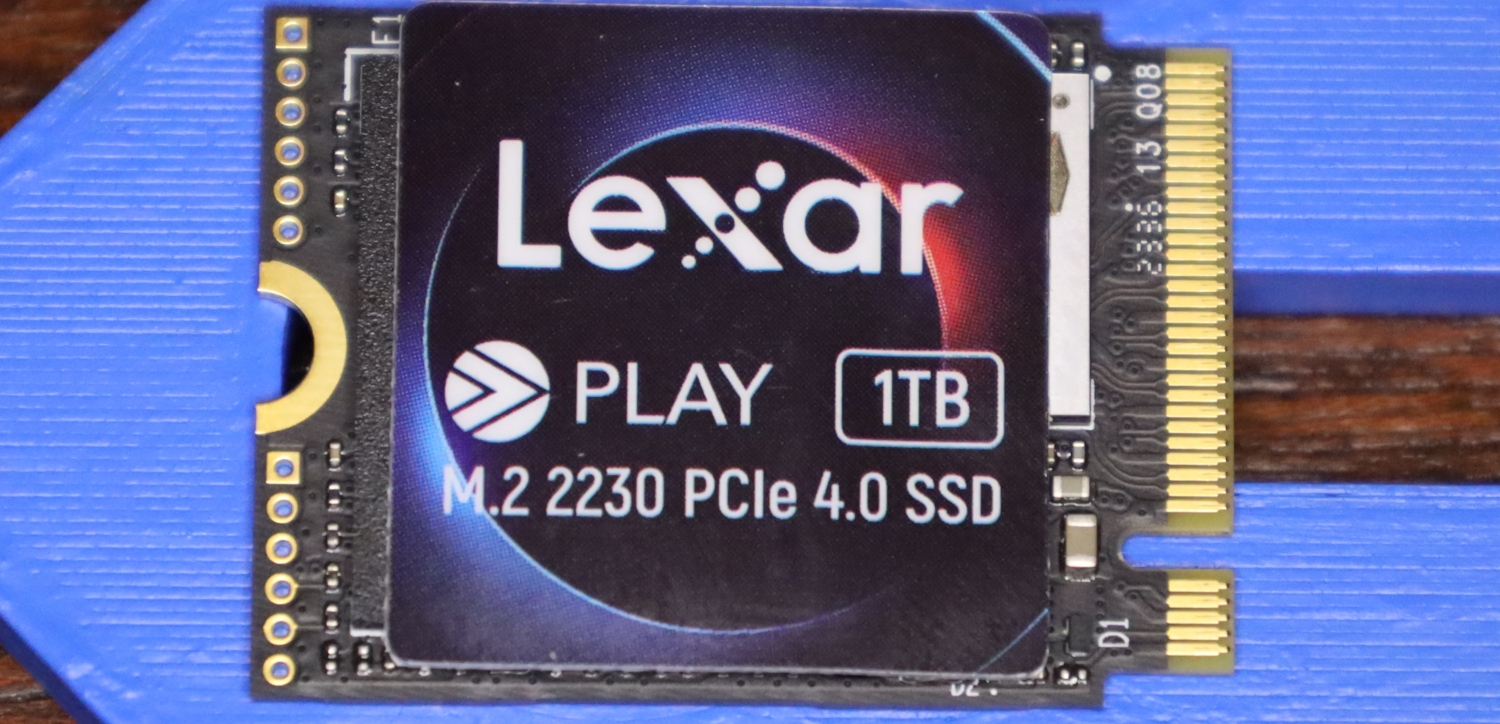
Onboard, the drive comes equipped with a Silicon Motion SM2269XT controller. We have seen this controller before in the Solidigm P41 Plus, and at the time, I came away with mixed feelings about that drive’s performance. The P41 Plus was paired with QLC NAND, while the PLAY sports Micron-branded TLC, so I expect better performance out of the PLAY. With that said, the SM2269XT is designed for DRAM-less drives, and indeed the PLAY has no DRAM cache.
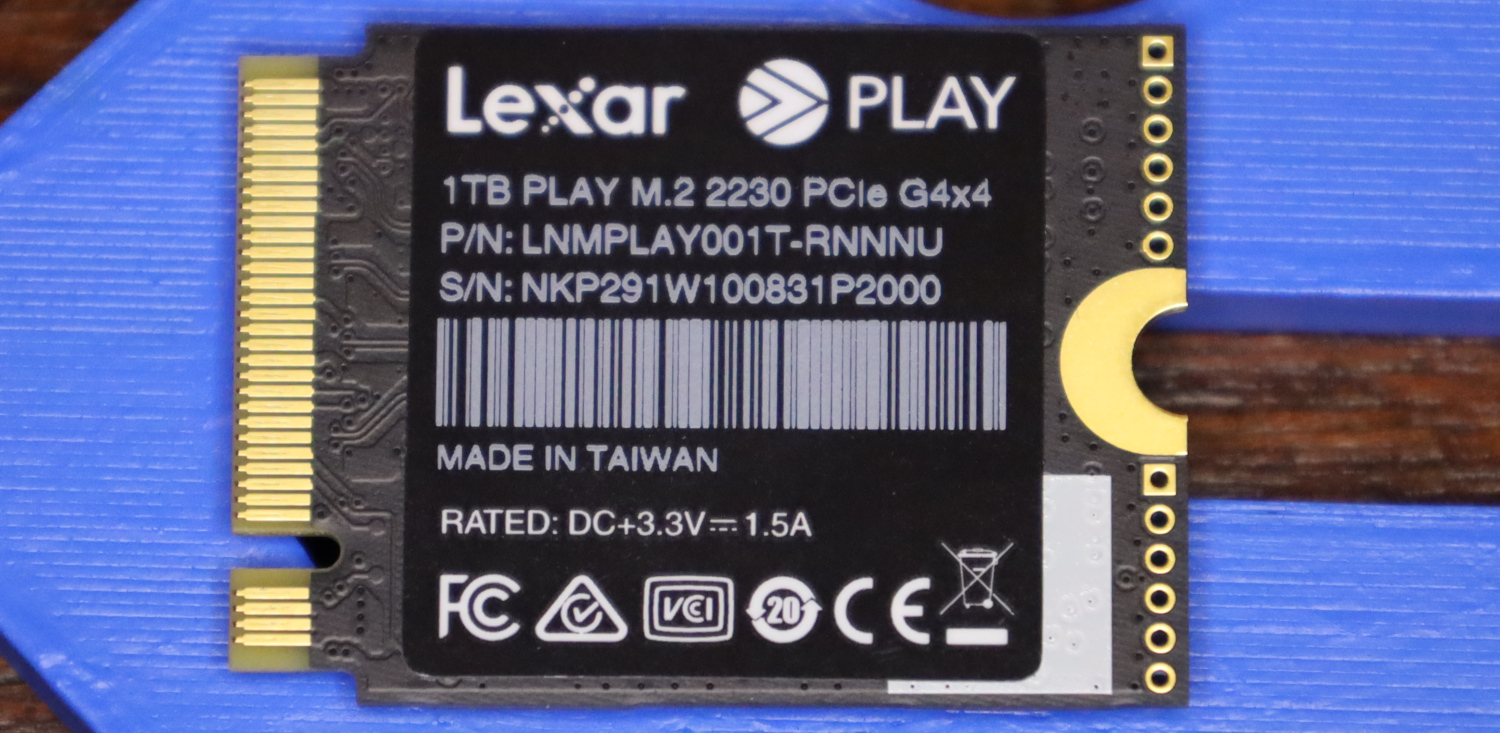
The backside of the Lexar PLAY 1TB a product label.
Lexar PLAY 1TB SSD Specs
The Lexar PLAY is only available at 1TB capacity.
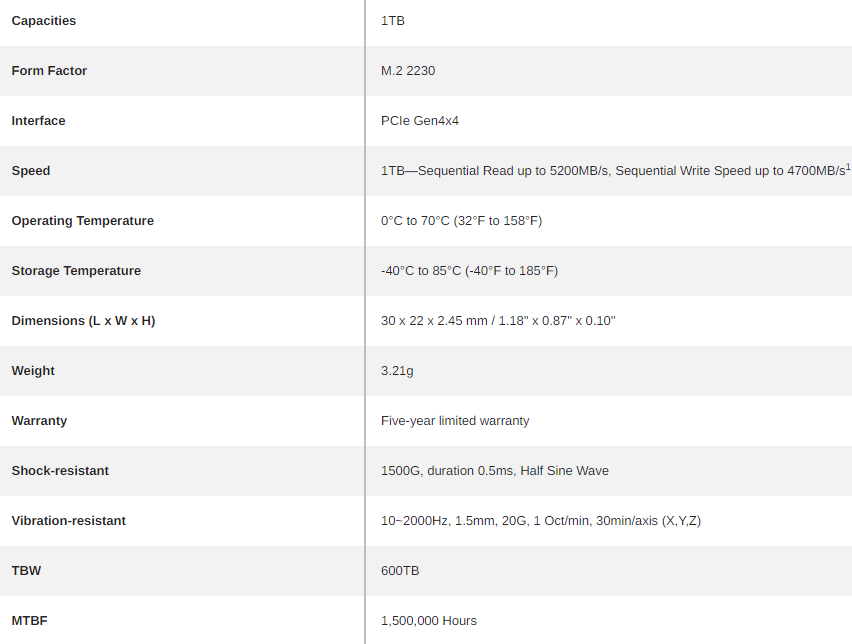
5200 MB/s read and 4700 MB/s sequential write speeds are not top-end as far as a Gen 4 drive goes, but they are firmly above anything a Gen 3 drive could hope to achieve. Given the form factor, not targeting 7 GB/s makes some sense. The rated endurance is 600 TBW, which is perfectly in line for a 1TB drive and should be more than enough given the intended market for this drive. Finally, rounding out the specs is the industry standard 5-year warranty. If this were a 2280 sized drive, none of this would stand out in any way, but the 2230 form factor has significantly fewer competing drives.
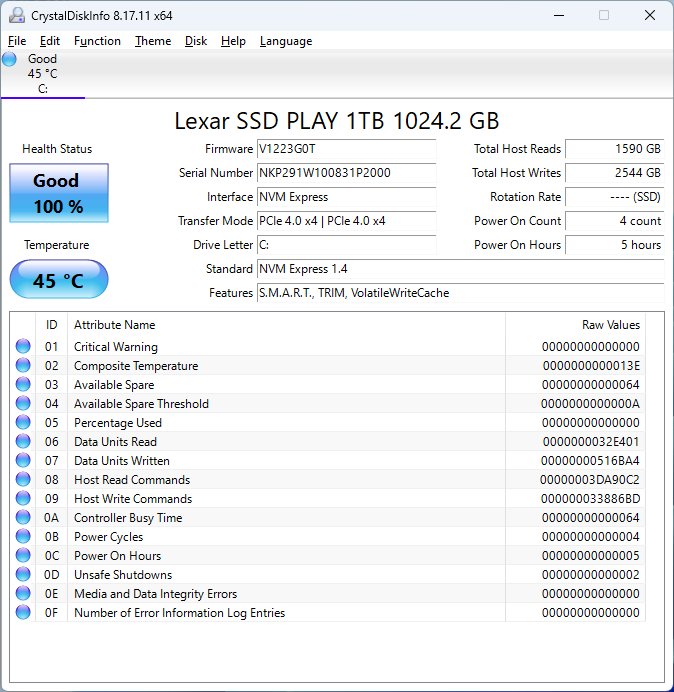
CrystalDiskInfo can give us some basic information about the SSD and confirms we are operating at PCIe 4.0 x4 speeds using NVMe 1.4.
Test System Configuration
We are using the following configuration for this test:
- Motherboard: MSI MAG X670E Tomahawk
- CPU: AMD Ryzen 9 7900X (12C/24T)
- RAM: 2x 16GB DDR5-6000 UDIMMs
Our testing uses the Lexar PLAY 1TB as the boot drive for the system, installed in the M.2_1 slot on the motherboard. This slot supports up to PCIe Gen 5 x4. The drive is filled to 85% capacity with data, and then some is deleted, leaving around 60% used space on the volume. Special note: the M.2_1 slot on this board does not natively support 2230-sized drives, so I just rigged it into place. It does not affect my testing, but it was worth noting.
Next, we are going to get into our performance testing.

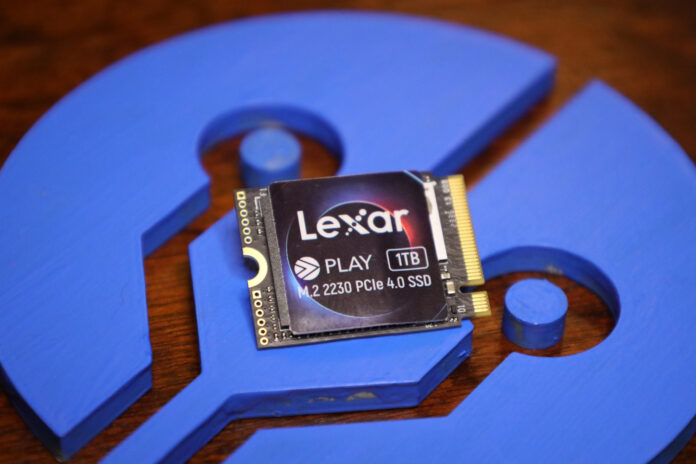


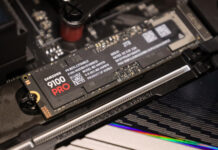
Dell has switched to 2230-sized SSDs in their laptops recently too. It’s such a pain to accommodate all the different form factor sizes these days. 2280, 2260, 2250, 2230, plus all the E1L E1S, etc. It was great when everyone agreed to the 3.5mm standard. I know we need something smaller, but there are just too many versions now. Hope they don’t make the same mistake with the new DDR5 laptop memory format.
I believe we have at least 3 more 2230 sized drives incoming for reviews in the future.
Personally, I’m hoping they make 2230 Gen 5 x2 lane drives.
How realistic are the numbers in a real situation? Doesn’t the heat sink kind of destroys the test? In many, if not most places where a 2230 is used you don’t have the space for it.
I take it the 84 degrees were with the heat sink attached? That makes me wonder what happens when you put it under endured stress without a heat sink. Will it silently fail, or will it throttle?
84C was achieved without a heat sink. One was added to prevent any thermal throttling under testing. As I said in my review, though, temperatures only got up there under extreme load. Average use will not pose a problem.